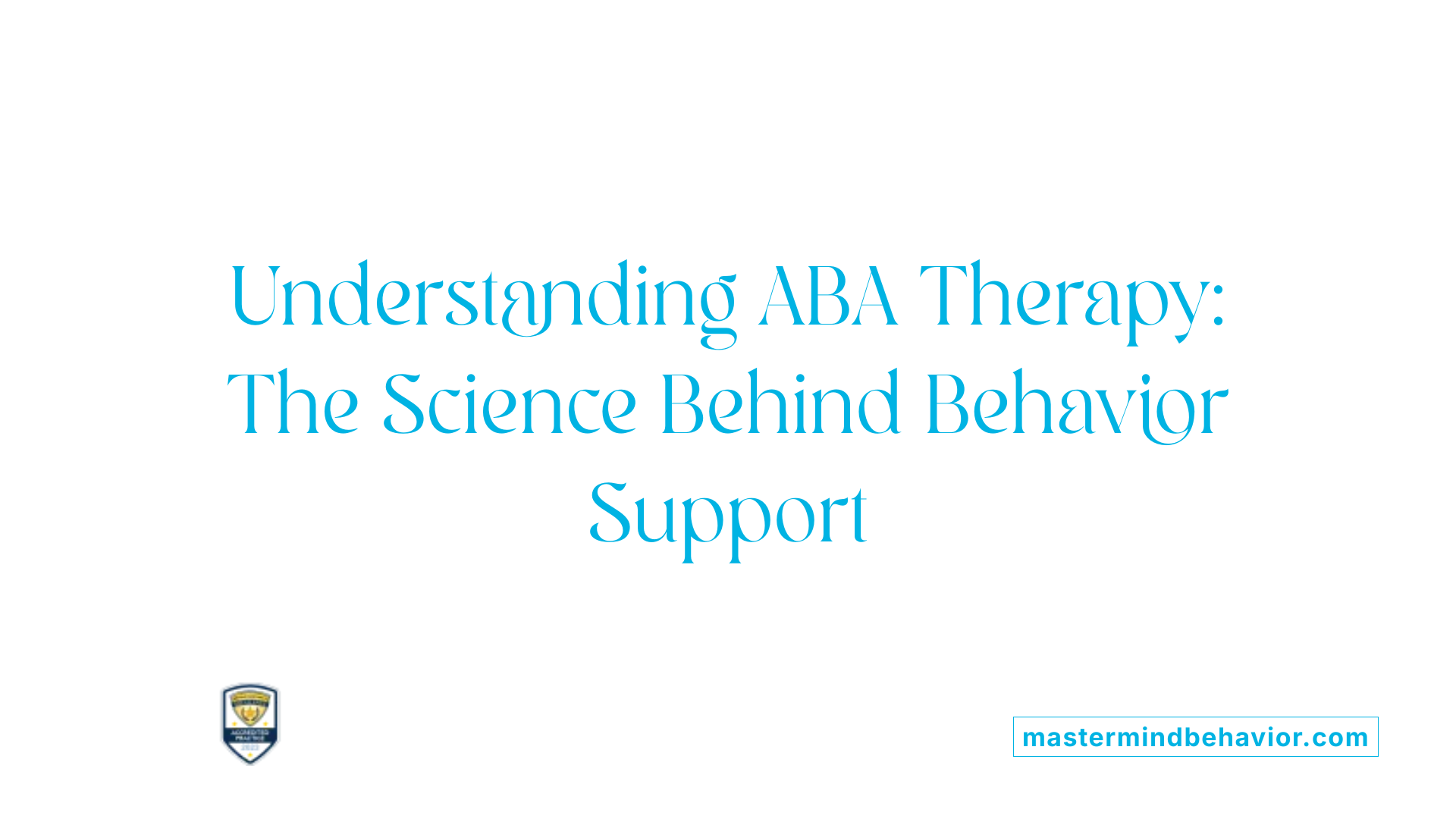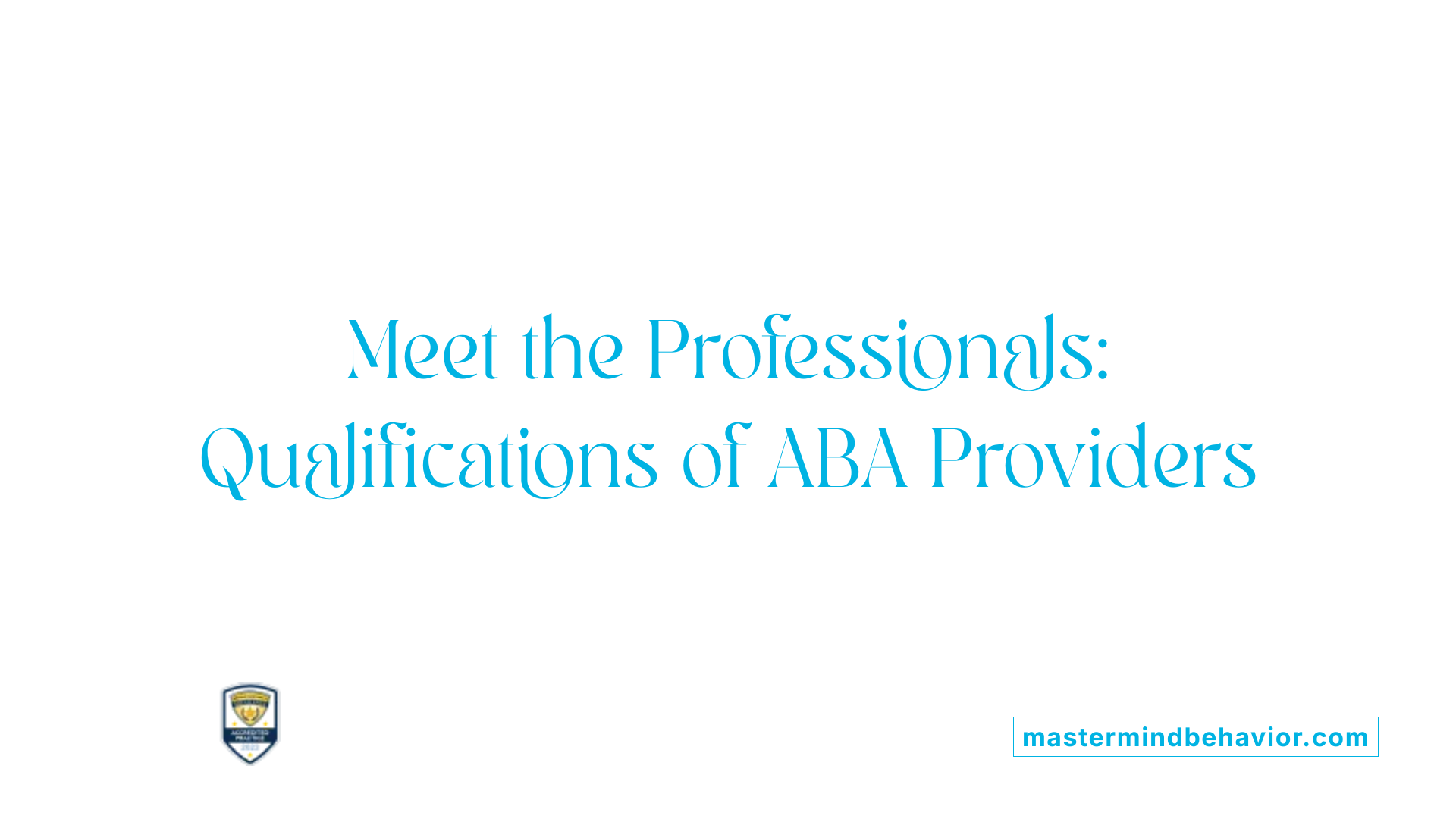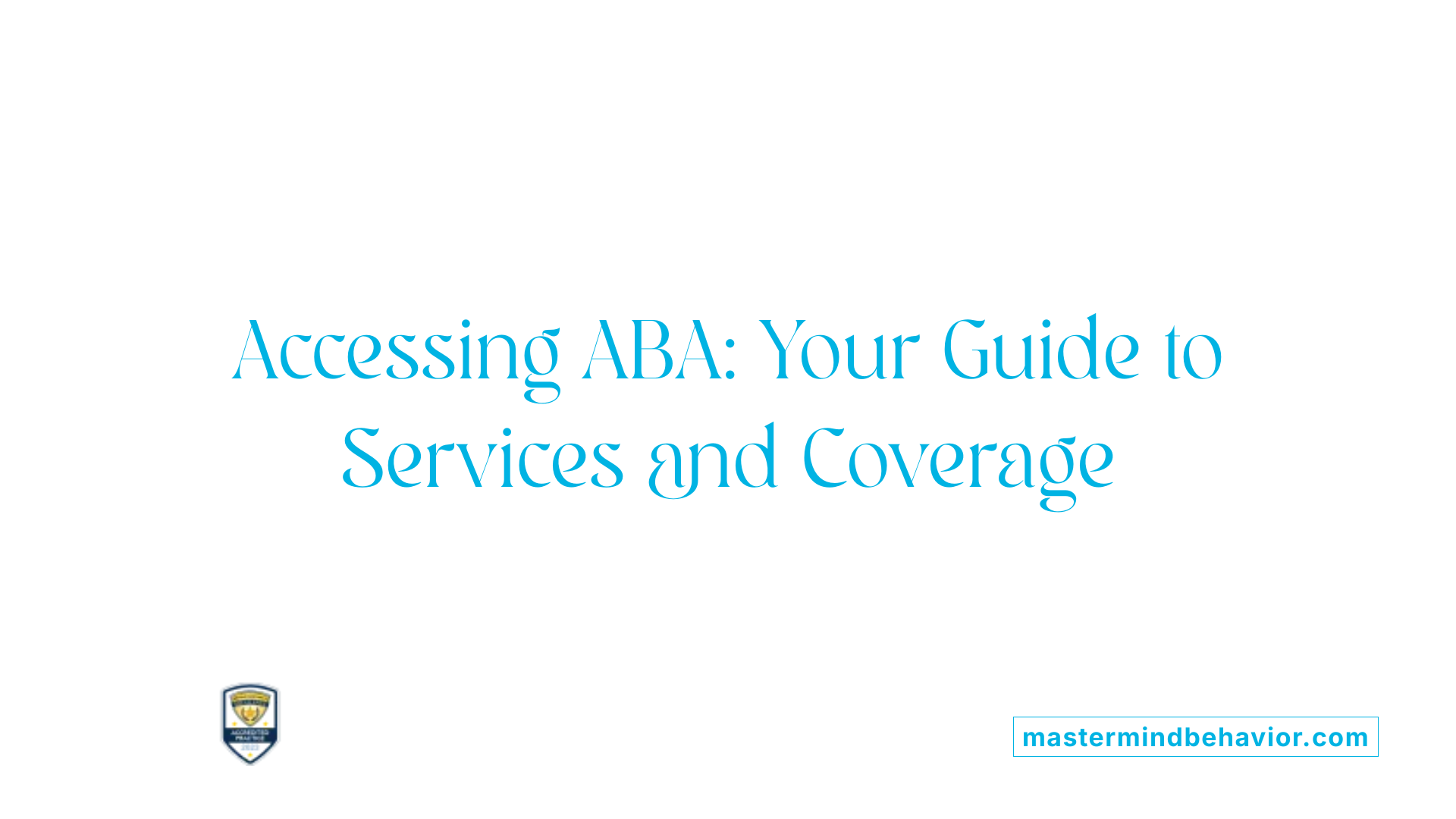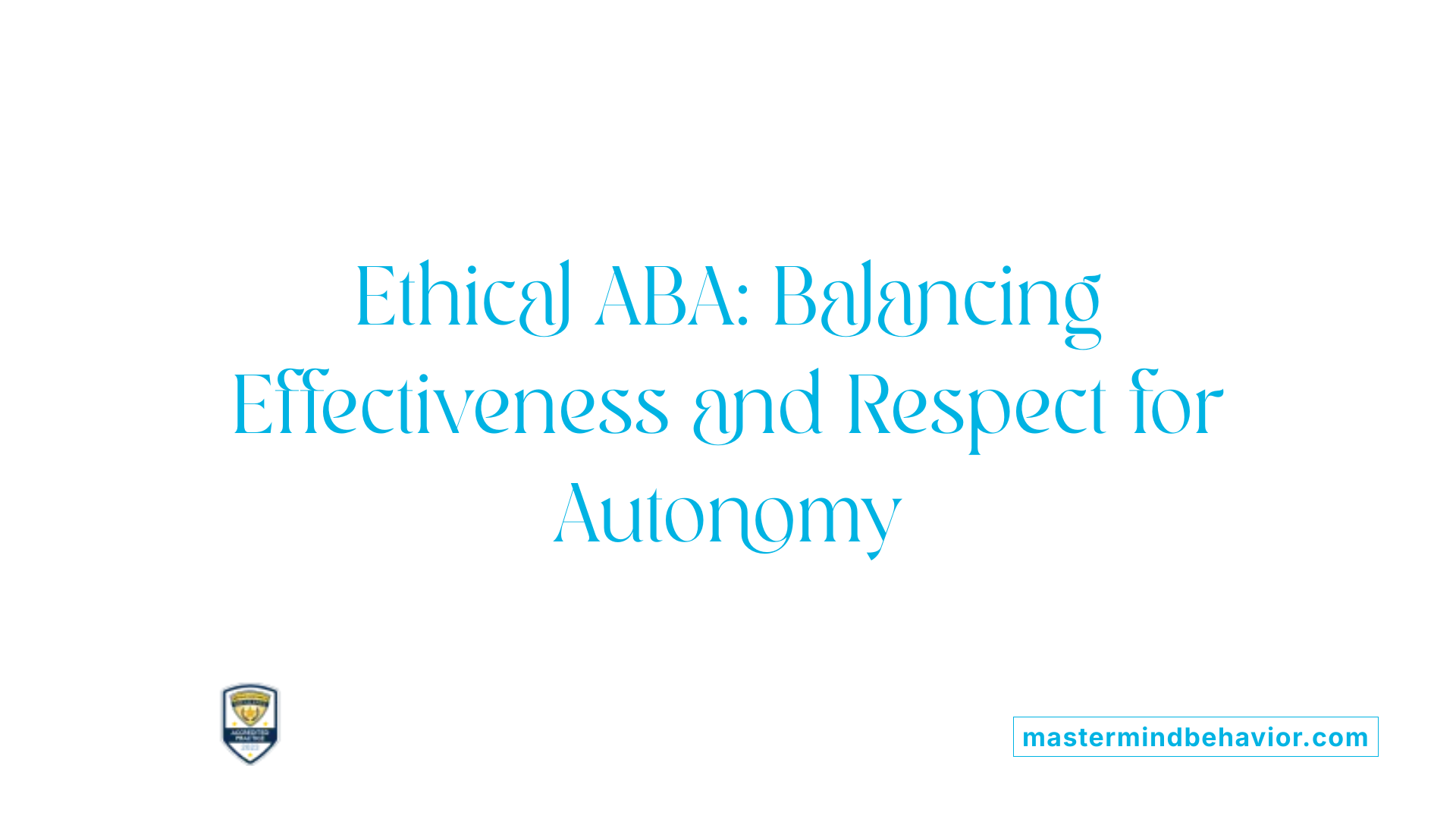Teaching Coping Skills For Test Anxiety Through ABA Therapy

Understanding ABA Therapy and Its Role in Coping Skill Development
Applied Behavior Analysis (ABA) therapy is a scientifically validated approach designed to enhance behavioral skills and reduce challenges among individuals with autism. When it comes to managing test anxiety, ABA’s personalized interventions can empower children to cope effectively through tailored skills and strategies. This article explores how ABA therapy supports the development of coping skills for test anxiety, emphasizing individualized approaches, evidence-based techniques, and collaborative efforts with families to foster emotional resilience and independence.
What is ABA Therapy and How Does It Support Autism?

Understanding ABA Therapy
Applied Behavior Analysis (ABA) therapy is a method grounded in the science of learning and behavior. It focuses on how behaviors are shaped by the environment, using the ABCs framework, which stands for Antecedent, Behavior, and Consequence. This approach helps clinicians identify what triggers behaviors and how to encourage positive changes.
The ABCs Framework Explained
The ABCs framework breaks down behavior analysis into three parts: the Antecedent is what happens before a behavior, the Behavior is the action itself, and the Consequence is what follows. By understanding these steps, therapists can modify environments and responses to promote helpful behaviors and discourage problematic ones.
Goals of ABA
ABA aims to increase useful skills such as communication, social interaction, self-care, academic performance, and emotional regulation. It also seeks to reduce harmful or hindering behaviors, creating a more supportive path for children with autism to thrive in daily life.
Role of Positive Reinforcement
A core strategy of ABA is positive reinforcement, where desired behaviors are immediately followed by rewards that the child values. This encourages repetition of beneficial behaviors and supports learning in a motivating way.
Individualized and Data-Driven Approach
Each ABA program is tailored by qualified behavior analysts to meet the unique needs of the child. Progress is closely monitored through data collection, allowing therapists to adjust strategies continuously. This ensures that the interventions remain effective and aligned with the child’s evolving goals.
Implementation Across Different Settings
ABA therapy is implemented across various environments, including home, school, and community settings. Therapists work closely with families to reinforce coping skills and positive behaviors consistently, helping children generalize skills to all areas of their lives.
Who Provides ABA Therapy and What Are Their Qualifications?

Who Provides ABA Therapy, and What Qualifications Do These Professionals Typically Have?
ABA therapy is delivered by specialized professionals trained in behavior analysis, ensuring effective and individualized intervention for children with autism. The primary providers include Board Certified Behavior Analysts (BCBAs), Registered Behavior Technicians (RBTs), and Board Certified Assistant Behavior Analysts (BCaBAs).
Educational Background and Training
BCBAs typically hold a graduate degree in psychology, education, or a related field, supplemented by specialized coursework in applied behavior analysis. BCaBAs also require graduate education with supervised experience but function under the supervision of BCBAs. RBTs generally possess a high school diploma or equivalent and complete specific ABA training combined with proficiency exams.
Certification Requirements and Continuing Education
All ABA professionals obtain certification through the Behavior Analyst Certification Board (BACB). This certification involves meeting educational prerequisites, supervised clinical experience, and passing rigorous exams. Maintaining certification requires adherence to ethical standards and ongoing continuing education to stay current with best practices.
Settings Where ABA Professionals Work
ABA practitioners operate in a variety of environments, including clinics, schools, hospitals, and community agencies. This flexibility allows therapy to be tailored to the child’s context, supporting generalization of skills across different settings.
Importance of Qualifications for Quality ABA Intervention
Qualified professionals ensure that ABA interventions are evidence-based, personalized, and effective. Their expertise guides the use of techniques like positive reinforcement, data-driven adjustments, and individualized coping strategies, crucial for fostering emotional resilience and communication skills in children with autism.
Key Benefits of ABA Therapy for Coping with Test Anxiety in Autism

How Does ABA Therapy Improve Communication and Emotional Regulation?
ABA therapy is designed to enhance communication and emotional control by teaching children how to express their emotions and manage social situations effectively. Techniques such as positive reinforcement and the use of visual schedules help children learn coping strategies like deep breathing, requesting breaks, and using sensory tools such as noise-canceling headphones. These methods foster greater emotional regulation and social skills that are vital for managing test anxiety and other stressors.
In What Ways Does ABA Help Reduce Anxiety and Challenging Behaviors?
ABA aims to increase helpful behaviors while reducing those that hinder learning or cause distress, including anxiety-related behaviors. Through breaking complex tasks into smaller, manageable steps and using role-playing and repetition, children build confidence and reduce anxiety responses. Sensory coping tools like weighted vests and fidget toys are integral to managing sensory overload, which often exacerbates anxiety and challenging behaviors.
What Makes ABA Therapy's Approach Personalized and Evidence-Based?
Each ABA program is tailored by qualified behavior analysts (BCBAs) to meet the individual needs of the child. Data collection is a continuous process in ABA, allowing therapists to monitor progress carefully and adjust strategies for optimal results. This evidence-based approach ensures that coping strategies and goals are specifically designed and refined for each learner, enhancing effectiveness.
How Does ABA Enhance Long-Term Resilience and Independence?
Early development of coping skills in ABA therapy builds emotional resilience and independence over time. By practicing coping strategies consistently across environments—with family support—children gain the tools needed to manage anxiety and sensory sensitivities beyond therapy sessions. These skills contribute to improved attention, focus, and the ability to handle new challenges, promoting greater autonomy in daily life.
What Role Does Family Participation Play in ABA Therapy?
Family collaboration is a vital component of ABA, ensuring that coping skills are reinforced consistently at home, school, and other settings. Behavior analysts work closely with families to train them in techniques and strategies, which supports skill generalization. Consistent practice across environments helps children maintain their progress and apply coping methods effectively in real-world situations.
Structuring ABA Therapy Programs to Teach Coping Skills for Test Anxiety
How is an ABA therapy program typically structured, and what does a typical session involve?
ABA therapy programs begin with thorough assessments that identify each child's unique challenges and strengths. These evaluations gather information from caregivers and use validated tools to pinpoint specific skill deficits. Based on this data, a Board Certified Behavior Analyst (BCBA) designs an individualized treatment plan tailored to the child's needs.
Sessions usually involve one-on-one work, focusing on teaching coping strategies through evidence-based behavioral techniques. Positive reinforcement is a central method, encouraging desired behaviors by rewarding the child immediately after they occur. For example, when a child successfully uses deep breathing or asks for a break during moments of distress, they receive praise or a preferred reward to reinforce the coping skill.
Clear, measurable goals are set to track progress on coping mechanisms such as emotional regulation, sensory management, and communication skills. Throughout therapy, data are continuously collected during each session, allowing therapists to monitor growth and make necessary adjustments. This continuous feedback loop ensures strategies remain effective and personalized.
ABA therapy sessions often incorporate tools and methods like visual schedules, role-playing, and sensory items such as fidget toys or noise-canceling headphones. These adaptations address sensory sensitivities and help children better manage anxiety triggers.
Family collaboration is essential. Behavior analysts regularly communicate with caregivers and educators to maintain consistency of coping skill use across different environments like home, school, and therapy settings. This collaboration supports the child's ability to generalize and maintain coping strategies beyond therapy.
Together, this structured approach in ABA promotes gradual mastery of coping skills for test anxiety, increasing emotional resilience and independence in children with autism.
Teaching Practical Coping Strategies Through ABA
How does ABA teach deep breathing and relaxation techniques?
ABA therapy incorporates structured methods to help children learn relaxation skills such as deep breathing. Therapists use step-by-step guidance and positive reinforcement to encourage children to practice these calming methods regularly, making the skill accessible in moments of stress.
How do children learn to request breaks during stressful situations?
Requesting breaks is taught through ABA strategies that break down the communication process into manageable parts. Using role-playing and repetition, children become confident in expressing their needs for a pause when overwhelmed, fostering self-advocacy and emotional regulation.
What sensory tools are used to support coping in ABA?
Sensory supports such as noise-canceling headphones help manage sensory overload. These tools are often introduced gradually and paired with reinforcement to encourage their use. Other items like weighted vests and fidget toys are personalized to match each child's preferences and sensory sensitivities.
How are visual aids and fidget toys integrated into ABA programs?
Visual aids provide concrete cues that enhance understanding and predictability, such as visual schedules illustrating the daily routine or coping steps. Fidget toys serve as grounding tools to reduce anxiety and improve focus. ABA therapists select and incorporate these tools based on individual needs.
How does ABA use role-playing and repetition to reinforce coping skills?
Role-playing scenarios allow children to practice emotional regulation and social interactions in a safe environment. Combined with consistent repetition and rewarding successes, this method solidifies coping strategies, helping children generalize skills to real-life situations.
These targeted ABA techniques equip children on the autism spectrum with practical coping skills, promoting emotional resilience and increased independence.
Sensory Coping Tools in ABA Therapy for Managing Test Anxiety
Weighted vests and calming environments
ABA therapy incorporates sensory coping tools such as weighted vests and calming environments to help children manage sensory overload and anxiety. Weighted vests provide deep pressure stimulation which can have a soothing effect, promoting relaxation and focus during stressful situations like test-taking.
Fidget toys and sensory regulation aids
Fidget toys are commonly used within ABA programs as sensory regulation aids. These tools help children self-regulate and redirect nervous energy in a constructive manner. By engaging their sense of touch, children can reduce feelings of anxiety and maintain attention more effectively.
Adaptation of sensory tools to individual needs
A core principle of ABA therapy is personalizing interventions. Sensory tools are adapted to match each child's unique sensory sensitivities and preferences. For example, some children might find noise-canceling headphones helpful, while others may benefit more from calming playlists or visual aids. This customization enhances the effectiveness of coping strategies.
Sensory sensitivities and emotional management
Sensory sensitivities can contribute significantly to emotional distress in children with autism, especially during high-pressure scenarios like tests. ABA therapy teaches coping skills that include the use of sensory tools to manage these sensitivities. By integrating these aids with behavioral strategies such as deep breathing and requesting breaks, ABA helps children regulate emotions and reduce anxiety.
| Sensory Coping Tool | Purpose | Adaptation Examples |
|---|---|---|
| Weighted vests | Deep pressure for calming | Used during tests to reduce anxiety |
| Fidget toys | Sensory regulation and focus | Selected based on texture preferences |
| Noise-canceling headphones | Minimize auditory distractions | Used to block noise sensitivity during tasks |
| Calming playlists | Auditory soothing | Customized music to match calming preferences |
Collaborative Approach: Families and Therapists Working Together
Continuous Communication and Consistency
A cornerstone of effective ABA therapy involves ongoing communication between behavior analysts and families. Regular exchanges ensure everyone stays informed about the child's progress and emerging needs. This consistent dialogue helps maintain alignment in strategies and goals, which is critical for skill development.
Reinforcement of Coping Skills Across Settings
ABA therapists emphasize reinforcing coping skills not just during therapy sessions but also at home, school, and other everyday environments. By collaborating with families, therapists help extend the learning beyond the clinic. Families learn techniques to support behaviors like deep breathing, requesting breaks, or using sensory tools, making these skills a natural part of the child’s routine.
Supporting Generalization from Therapy to School and Home
Generalization is vital for lasting success. Through collaboration, behavior analysts and caregivers create opportunities for children to practice coping strategies in diverse settings, such as classrooms or playgrounds. This shared approach encourages children to apply learned skills flexibly, improving their emotional regulation and social interactions.
Empowering Caregivers
ABA therapy actively involves caregivers by equipping them with tailored tools and training. Understanding how to use visuals, fidget toys, or calming playlists empowers families to confidently assist their children. This partnership nurtures a supportive environment where coping skills are consistently supported, fostering greater independence and resilience in the child.
Evidence Supporting ABA’s Effectiveness in Anxiety Management for Autism
Decades of research and scientific studies
ABA therapy has a robust foundation built on over six decades of research since its inception in the 1960s. More than 20 scientific studies have demonstrated its effectiveness, specifically in supporting children with autism to develop crucial coping and emotional regulation skills. This extensive research base highlights ABA’s role in managing anxiety and other behavioral challenges by using structured, evidence-based techniques.
Recognition by authoritative bodies
ABA is recognized as an evidence-based best practice by leading organizations such as the US Surgeon General and the American Psychological Association. This acknowledgement underscores ABA’s credibility and its established effectiveness in improving outcomes for individuals with autism, including anxiety management.
Long-term benefits of intensive ABA programs
Intensive and long-term ABA therapy programs have been shown to promote emotional resilience, independence, and improved social and communication skills. These outcomes are especially important for managing anxiety in children with autism, as ABA teaches personalized coping strategies like deep breathing, requesting breaks, and using sensory tools to handle stressful or overstimulating situations.
Personalized data tracking enhancing treatment outcomes
A distinctive strength of ABA therapy lies in its continuous data collection and monitoring approach. Behavior analysts collect detailed progress data to tailor interventions to the unique needs of each child. This personalization allows therapists to adjust coping strategies and treatment goals dynamically, ensuring optimal support for managing anxiety and fostering emotional well-being.
ABA’s evidence-based framework, authoritative support, long-term impact, and individualized approach make it a powerful tool in helping autistic children manage anxiety effectively.
Navigating Access: How to Obtain ABA Therapy Services

Consulting Healthcare Providers
The first step in accessing ABA therapy services is to consult with your healthcare provider. This professional can help evaluate your child's needs and provide a formal prescription or referral for ABA services, which is often required by insurance companies.
Insurance Coverage Including Medicaid and Private Insurers
ABA therapy is frequently covered by private insurance plans and Medicaid when deemed medically necessary. It's important to check with your insurance provider to understand the coverage details, such as the number of authorized therapy hours and any co-pays or deductibles.
Verification Processes and Selecting Qualified Providers
After confirming coverage, the next step is verifying which ABA providers participate in your insurance network. Choosing a qualified provider certified as a Board Certified Behavior Analyst (BCBA) ensures that your child will receive individualized, evidence-based care. It's advisable to inquire about the provider's experience and their approach to customizing ABA programs to fit each child's unique needs.
Questions to Ask About Provider Qualifications and Approach
When selecting a provider, consider asking questions such as:
- What certifications and experience do your therapists have?
- How do you personalize ABA programs for each child?
- How is progress tracked and communicated to families?
- How do you involve families in therapy to encourage consistent skill reinforcement across environments?
Being informed about these aspects helps parents make confident decisions to ensure effective and supportive ABA therapy for their child.
Balancing Effectiveness with Ethical Considerations in ABA

Are there any criticisms or controversies associated with ABA therapy in the context of autism treatment?
ABA therapy, while recognized as an evidence-based approach to supporting children with autism, has faced criticisms related to its methods and goals. Critics often point to the therapy’s historical emphasis on compliance and conformity, which some believe may suppress the individuality of autistic people. This focus can sometimes overshadow the person’s unique neurodiverse traits, leading to concerns that ABA may prioritize making behaviors appear 'neurotypical' rather than embracing authentic self-expression.
Concerns have also been raised about the potential rigidity of some ABA programs. When therapy heavily targets changing behaviors without fully honoring the autistic child’s identity, it risks feeling coercive rather than supportive. This has prompted a wider discussion around the importance of respecting autistic identity and ensuring that interventions promote well-being without diminishing personal autonomy.
In response to these concerns, many practitioners and advocates within the ABA community are working to evolve the approach. Efforts include integrating acceptance-oriented practices that emphasize empathy, choice, and collaboration with the autistic individual and their family. For example, adapting goals to focus on enhancing quality of life, emotional regulation, and social connection from the child’s perspective is becoming more common.
The ongoing challenge is to balance ABA’s demonstrated effectiveness with ethical awareness. By listening to the autism community and emphasizing individualized support over rigid behavior modification, ABA therapy can shift towards a more respectful and neurodiversity-affirming practice.
Empowering Emotional Resilience Through ABA Therapy
ABA therapy stands as a scientifically supported method that fosters meaningful improvements in coping skills for children with autism, particularly in managing test anxiety. By tailoring interventions to individual needs and involving families in a collaborative approach, ABA promotes the development of practical strategies, sensory tools, and emotional regulation skills. While acknowledging ongoing discussions about its ethical dimensions, ABA’s evidence-based framework enables children to build confidence, independence, and resilience — essential qualities that help transform their experiences with anxiety into opportunities for growth and self-advocacy.
References
- How ABA Builds Coping Skills for Kids
- Applied Behavior Analysis (ABA)
- How to Become an Applied Behavior Analyst (ABA) Therapist
- ABA Certification Explained: RBT, BCaBA, BCBA, BCBA-D
- How to Become an ABA Therapist - School of Education
- Applied Behavior Analysis (ABA)
- ABA Therapy Examples, Definition & Techniques
- How ABA Therapy Can Improve Your Child's Life
Recent articles

How ABA Therapy Encourages Teamwork And Cooperation Skills
Unlocking Social Success: The Role of ABA Therapy in Fostering Teamwork and Cooperation

Teaching Coping Skills For Test Anxiety Through ABA Therapy
Harnessing ABA Therapy to Equip Children with Autism Against Test Anxiety

ABA Therapy For Supporting Flexibility In Changing Schedules
Navigating Change: ABA Therapy as a Lifeline for Flexible Routines

How ABA Therapy Improves Coping During Times Of Transition
Navigating Change with Confidence: The Role of ABA Therapy

How ABA Therapy Improves Morning And Bedtime Routines
Transforming Daily Habits: The Role of ABA Therapy in Structured Routines for Autism

How ABA Therapy Improves Coping With Unstructured Free Time
Enhancing Daily Living: ABA Therapy and Managing Unstructured Time for Children with Autism



